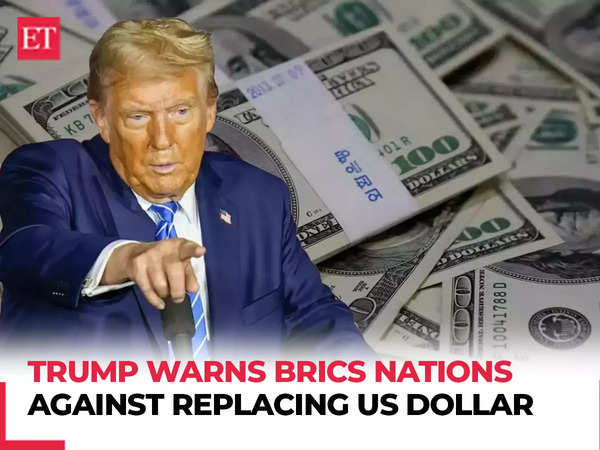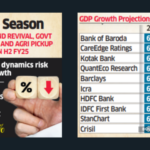NEW DELHI: US President-elect’s Donald Trump has threatened nine country BRICS bloc with 100% tariffs if they went ahead the plan to counter US dollar’s prominence in global transactions as a reserve currency, by creating alternatives.
Trade experts, however, called the move not only counter-productive, but also impractical.
India is key member of BRICS along with Brazil, Russia, China, South Africa, Ira, Egypt, Ethiopia and the UAE.
BRICS nations are making an attempt to create either new currency like euro or back some other emerging ones to gradually replace the US dollar.
Trump had called India a tariff king earlier, but this is the first time he indicated about any adverse tariff action against New Delhi after being elected as the 47th president of the US.
Dollar’s dominance is one of the key impediment for emerging market economies, as they seek to enhance their share in world trade and tilt the economic gains from trade in goods and services, as well as capital flows, in their favour.
Last week, India’s commerce and industry minister Piyush Goyal had allayed the fears about the adverse implications of Trump’s protectionist policies for India, citing the strong and growing ties between the two countries under prime minister Narendra Modi.
The latest threat was delivered by Trump through a social media post and like similar threats he had issued to China, Canada and Mexico. Trump justifies the moves by quoting the US’s status as world’s biggest importer – inward shipments of the country stood at $ 3.17 trillion in 2023.
“Trump’s threat to impose 100% tariffs on countries adopting a BRICS currency is unrealistic and more symbolic than practical. Tariffs of this scale would harm US consumers by raising prices on imports, disrupt global trade, and risk retaliation from key trading partners,” founder of Global Trade Research Initiative Ajay Srivastava said.
The nine-nation grouping of which India is a founding member in its 16th Summit at Kazan in Russia last month the push was provided to the idea of trade settlement among members in local currencies. The members called for strengthening of correspondent banking networks within BRICS and enabling settlements in local currencies in line with BRICS Cross-Border Payments Initiative (BCBPI). Something concrete may emerge after further discussions in the coming months, officials had said after the summit..
While the US dollar dominates global trade accounting for 90% of the transactions, other convertible currencies like Japanese yen, euro and British pound too are integral to global commerce. “The United States has not objected to their use. The proposed BRICS currency is simply an extension of these existing alternatives, aiming to facilitate trade among member countries and reduce over-reliance on a single currency.” Srivstava said.
It is the US’ action that forced countries to look at alternatives to the dollar. The US has the history of leveraging its influence over global financial systems such as the SWIFT network for imposing unilateral sanctions.
SWIFT—the Society for Worldwide Interbank Financial Telecommunication—is essential for secure and standardized international financial transactions. “By blocking countries like Russia and Iran from accessing SWIFT, the US has effectively weaponized the global financial infrastructure, forcing other nations to find alternative payment mechanisms to continue legitimate trade,” he said.
It was after Russia was disconnected from SWIFT after the start of its war on Ukraine that the Reserve Bank of India (RBI) came up with a circular allowing invoicing and payment of international trade transactions in rupees.
Around 20 Authorised Dealer (AD) banks in India have been permitted to open 92 Special Rupee Vostro Accounts of partner banks from over 22 countries to facilitate this trade.
According to GTRI’s Srivastava imposing a 100% tariff on BRICS countries could backfire economically. “Imports into the US would simply shift to third countries, potentially increasing costs for American consumers without bringing manufacturing jobs back home. The US has become less competitive in manufacturing labor-intensive goods due to higher production costs, and tariffs are unlikely to reverse this trend,” he said
Additionally, the global shift away from the US dollar is a complex process driven by economic diversification, not easily deterred by threats. Such rhetoric ignores the interdependence of global economies and oversimplifies the challenges in enforcing such drastic measures, Srivastava said.
Source: The Financial Express




 Growth Seen At 6.1-6.8% For FY25 On 7-Quarter Q2 Low
Growth Seen At 6.1-6.8% For FY25 On 7-Quarter Q2 Low 